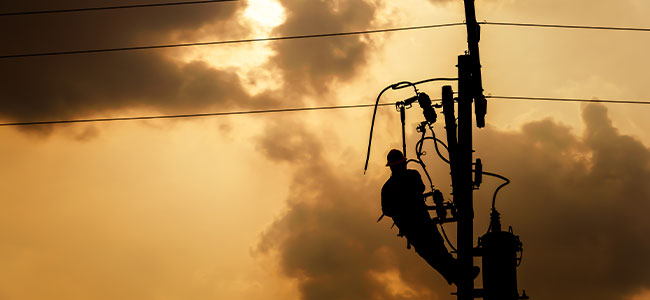
Power Outage Preparedness: Essential Steps to Protect Against a Facility Failure
Preparing for power outages involves essential steps, robust planning and investment in high-performance lighting to protect facilities and ensure continuous operations.
- By Rizwan Ahmad
- Apr 24, 2024
Power interruptions are posing a much greater risk throughout the U.S., largely due to an aging power grid and an increase in extreme weather events.
Equipment damage and production interruptions can drastically increase operating expenses and decrease revenue, ultimately resulting in lower profitability. The cost of unplanned downtime in manufacturing is estimated to be as high as $22,000 per minute and totaling $50 billion a year.
But power outages are not just inconvenient. When it comes to the industrial sector, the implications of a “lights out” scenario are tremendously costly and can quite literally put lives at risk.
Employee Safety Is a Top Priority
When considering heavy machinery, moving equipment, and harsh and hazardous conditions as a baseline, an unexpected power failure can instantly plunge a worksite into darkness, exposing employees to accidents at a much greater rate.
In fact, OSHA has identified poor lighting as a leading cause of injuries caused by slips, trips, falls and contact with objects and equipment.
This is why having a plan to address power failure before it happens is a no-brainer for all companies in the industrial sector.
Here are two practical steps to protect the business and employees today:
- Prepare and Practice a Power Outage Plan
Beyond utilizing backup generators as part of the resilience strategy, create formal power disruption protocols that identify critical equipment, emergency power sources and non-essential systems that can be shut down.
Then, conduct emergency drills to pressure test these protocols and refine the plan based on simulated as well as real-world outcomes to ensure readiness to a variety of operational challenges.
Being prepared for the unknown is the first step in keeping employees safe and reducing the risk of accidents and injuries. Don’t wait until a power outage occurs to realize the need to put a fool-proof plan in place.
- Maintain Visibility with Failure-Resistant Lighting
The concept of investing in high-performance, long-lasting equipment built to withstand the rigors of industrial sites is the cornerstone of a solid operational plan. However, what is often overlooked as part of this investment is the lighting itself.
Many facilities are encumbered with harsh conditions including constant vibration, high temperatures, dust and debris. All of these conditions wreak havoc on electrical equipment, including lighting, and can result in unexpected fixture failure. Lighter duty fixtures simply won’t last in these conditions and antiquated lighting technologies can take up to 20 minutes to come back to full brightness in the event of an outage.
Studies have shown that having clear visibility at work sites can reduce workplace accidents by as much as 60%.
Lighting As a Safety Solution
By far, the most efficient white light on the market today is LED lighting. In addition to providing superior visibility with energy-efficient, crisp, near-daylight illumination, industrial-grade LED lighting is far superior to legacy lighting technologies when it comes to withstanding the rigors of industrial sites.
The solid-state design of LEDs does not contain fragile bulbs or filaments that can easily break as a result of heavy vibration, and they can instantly go from being off to full brightness without a warm up period.
When combining these aspects with long-life, custom power supplies and mechanical housings designed to optimally manage thermals, industrial-grade LED lighting is the best way to safeguard work site visibility. Reputable manufacturers design and test these fixtures with harsh applications in mind, and many can last up to 10 years or more.
Perhaps most important is the ability for these high-performance lights to function in the event of a power outage. Long-lasting battery backup options exist—offering safe egress in the event of power outages—and contain self-testing and automated diagnostics, eliminating the need for periodic push button tests to ensure they are functioning. Indicator lights make for simple visual inspection and automated periodic testing offers peace of mind by ensuring built-in batteries are functional.
According to new data from the U.S. Bureau of Labor Statistics, a worker died every 96 minutes from a work-related injury in 2022. Don’t wait for an outage to put employees, equipment and productivity at risk. With the right protocols, equipment and fixtures in place, it’s possible to ensure safety and continuity, allowing the business to weather any storm.